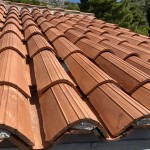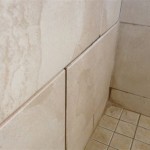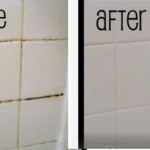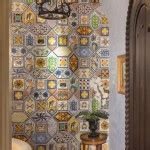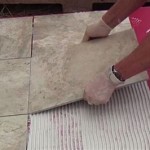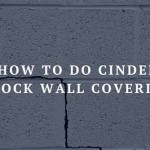Options For Achieving Tile Look In Your Home Minecraft
Minecraft, known for its blocky aesthetic, might not immediately conjure images of sleek, modern tiles. However, the game’s vast array of blocks and creative possibilities allow players to simulate the appearance of tile flooring, walls, and even decorative accents. This article explores various strategies for creating tile-like designs in Minecraft, examining the materials, techniques, and considerations necessary for achieving a visually appealing and realistic effect.
The pursuit of tile aesthetics within Minecraft stems from a desire to add detail and sophistication to builds. While the game's default textures lean towards the rustic and simplistic, tile designs offer a chance to introduce smoother surfaces, defined patterns, and a sense of realism often found in contemporary architecture. There are a number of advantages to adding tile looks to a Minecraft build. It offers a tangible and visually appealing means of differentiating spaces, allowing players to designate kitchens, bathrooms, or decorative areas with a distinctive visual cue. The deliberate use of tile-like placements provides opportunities for stylistic flair, demonstrating skill and effort in creating a home that is both functional and beautiful.
Furthermore, the process of creating these tile simulations often compels players to think creatively about how to repurpose existing Minecraft blocks. What might initially appear as a simple stone block can, with careful placement and layering, be transformed into part of a larger, more intricate tile design. This process of adaptive reuse is integral to the creative problem-solving at the heart of Minecraft.
Block Selection and Color Palette
The foundation of any successful tile build lies in the careful selection of blocks. The choice depends largely on the desired color scheme and overall style. Quartz blocks, particularly smooth quartz, are a popular choice for creating a clean, modern look. Their bright white color and unblemished texture lend themselves well to mimicking porcelain or ceramic tiles. Variations of quartz, such as quartz pillars and chiseled quartz, can be used to add texture and visual interest.
Concrete blocks offer a wider range of color options. The sixteen different concrete colors allow for the creation of vibrant and diverse tile patterns. These colors can be used to create checkerboard designs, gradient effects, or to highlight specific areas within a room. Concrete powder, before it hardens, can be used to create a slightly different texture, perhaps suggesting a less polished or more rustic tile surface. When using concrete powder, players must be careful to place it strategically, avoiding contact with water unless the intention is to convert it to a solid concrete block.
Terracotta blocks, including glazed terracotta, are another valuable resource for tile designs. Glazed terracotta blocks feature unique patterns and colors, making them ideal for decorative accents or creating intricate mosaic-like flooring. The variety of patterns allows for experimentation and the creation of complex designs within relatively small spaces. Different colors of terracotta provide a more muted and earthy palette for more traditional tile aesthetics.
Finally, Nether blocks can be strategically applied to replicate certain tile looks. Nether brick, with its dark red hue, can be used to create contrasting borders or to simulate darker, more dramatic tile surfaces. Blackstone, another Nether block, offers a darker alternative that can be used to add depth and shadow to tile designs.
Layout and Pattern Design
Once the blocks have been chosen, the next step is to consider the layout and pattern of the tile. Simple grids are a common starting point, but more interesting and complex patterns can be achieved with careful planning. Checkerboard patterns, created by alternating two different block colors, are a classic choice. Herringbone patterns, which involve arranging blocks in a zigzag pattern, offer a more visually dynamic effect. Creating a border of a different block type or color is another way to enhance the appearance of a tiled surface.
The scale of the tile pattern is also an important consideration. Smaller tiles, simulated by using single blocks or smaller groupings of blocks, can create a more detailed and intricate look. Larger tiles, created by using larger blocks such as quartz or concrete slabs, can create a more modern and minimalist aesthetic.
For more intricate designs, players can use stained glass panes to create mosaic effects. By placing stained glass panes of different colors in a grid, they can simulate the look of small, colorful tiles. This technique requires patience and precision, but it can produce stunning results. It is also vital to consider the light conditions of this build, since it will vastly affect the appearance of the tiles.
It is crucial to plan the tile layout carefully before committing to a specific design. Experimenting with different patterns and color combinations in a small test area can help to ensure that the final result is visually appealing and consistent with the overall architectural style of the build. Using online resources, such as image searches for real-world tile patterns, can also provide inspiration and guidance.
Slabs: Expanding the Tile Aesthetic
Slabs provide an invaluable tool for mimicking specific features associated with real-world tile installations. Slabs are generally half the height of a standard block, which allows for creating subtle variations in height that can enhance the realism of the tile simulation. By alternating full blocks with slabs, players can create the illusion of grout lines, the thin lines of mortar that separate individual tiles. This adds depth and definition to the tiled surface, making it appear more realistic.
Slabs also offer opportunities for creating complex patterns and designs. By combining different types of slabs, such as quartz slabs and stone slabs, players can create intricate mosaics or decorative borders. The ability to place slabs on top of each other allows for even greater flexibility in design, enabling the creation of layered effects and 3D textures.
When using slabs to simulate tile, it is important to consider their placement in relation to other blocks. Slabs can be used to create smooth transitions between tiled surfaces and other areas of a build. For example, a slab can be placed at the edge of a tiled floor to create a subtle step down into an adjacent room. Slabs can also be used to create decorative trim or molding around tiled walls.
The combination of slabs and other blocks offers a wide range of creative possibilities for simulating tile in Minecraft. By carefully considering the color, texture, and placement of slabs, players can create stunning and realistic tile designs that enhance the overall aesthetic of their builds. It will also add depth to your build, and give it a higher quality of work.
The use of stairs can also enhance the appearance of tiling in Minecraft. Stairs, as angled blocks, can act as edging for the tile pattern. They can also be repurposed to create texture and depth in the tile itself. Experiment with the rotations of the stairs, and try to create a pattern from them. This often enhances the appearance of a tile look in your home.
Overall, replicating the tile aesthetic can be difficult in Minecraft. But the variety of creative freedom allows players to achieve a new level of realism in their builds - and allows them to create their own unique, stylized homes.

Tutorials Making Nice Floors Minecraft Wiki

10 Best Minecraft Room Ideas To Try Out

Top 10 Minecraft Roof Designs Baker Roofing Company

How To Interior Design A Minecraft House Home Improvement Cast
What Are Some Creative Minecraft Kitchen Design Ideas Quora

Ideas For Your House In Minecraft Gportal

Tutorials Furniture Minecraft Wiki
How To Build A Awesome Flat In Minecraft Quora

Ideas For Your House In Minecraft Gportal

Tutorials Furniture Minecraft Wiki
Related Posts

